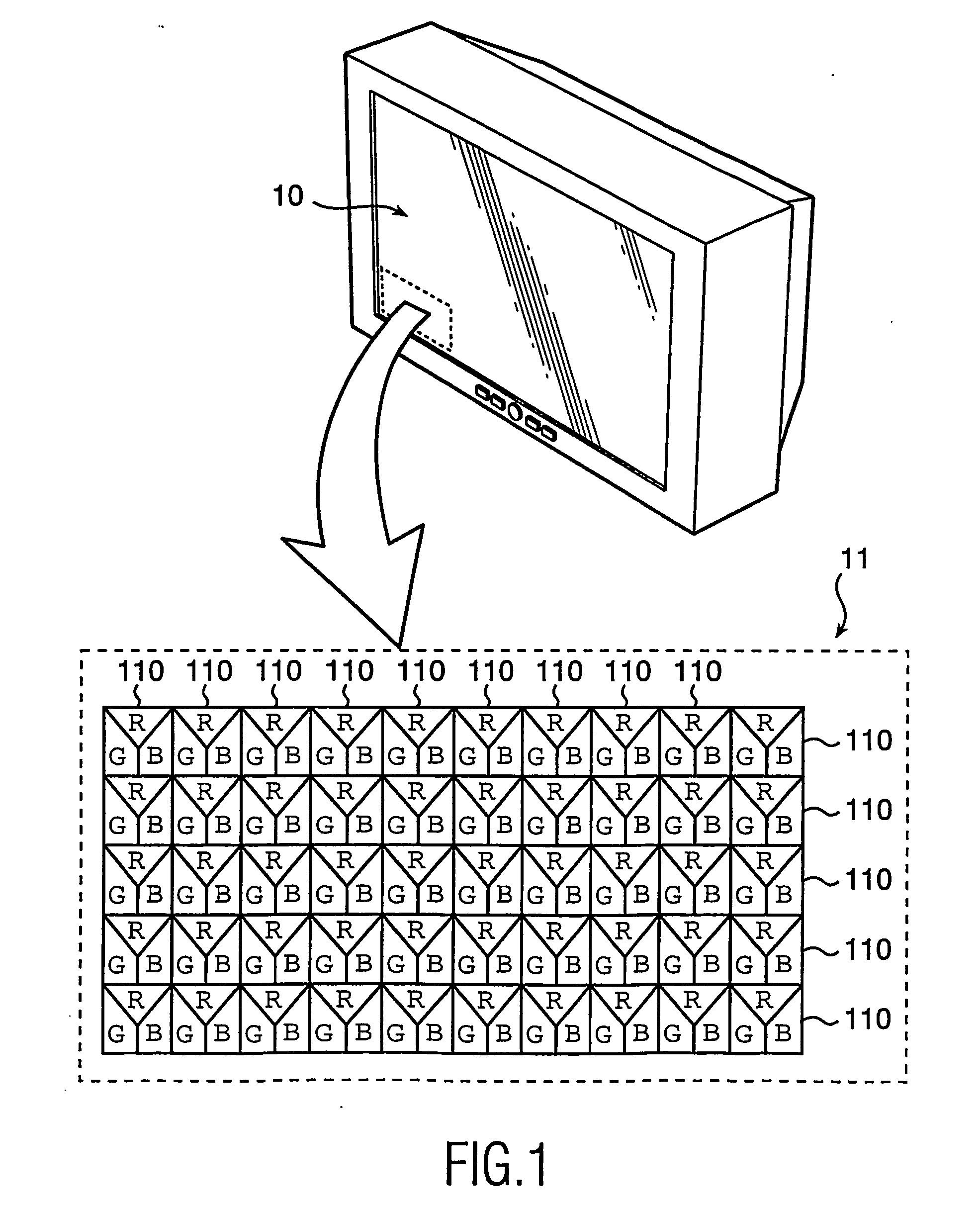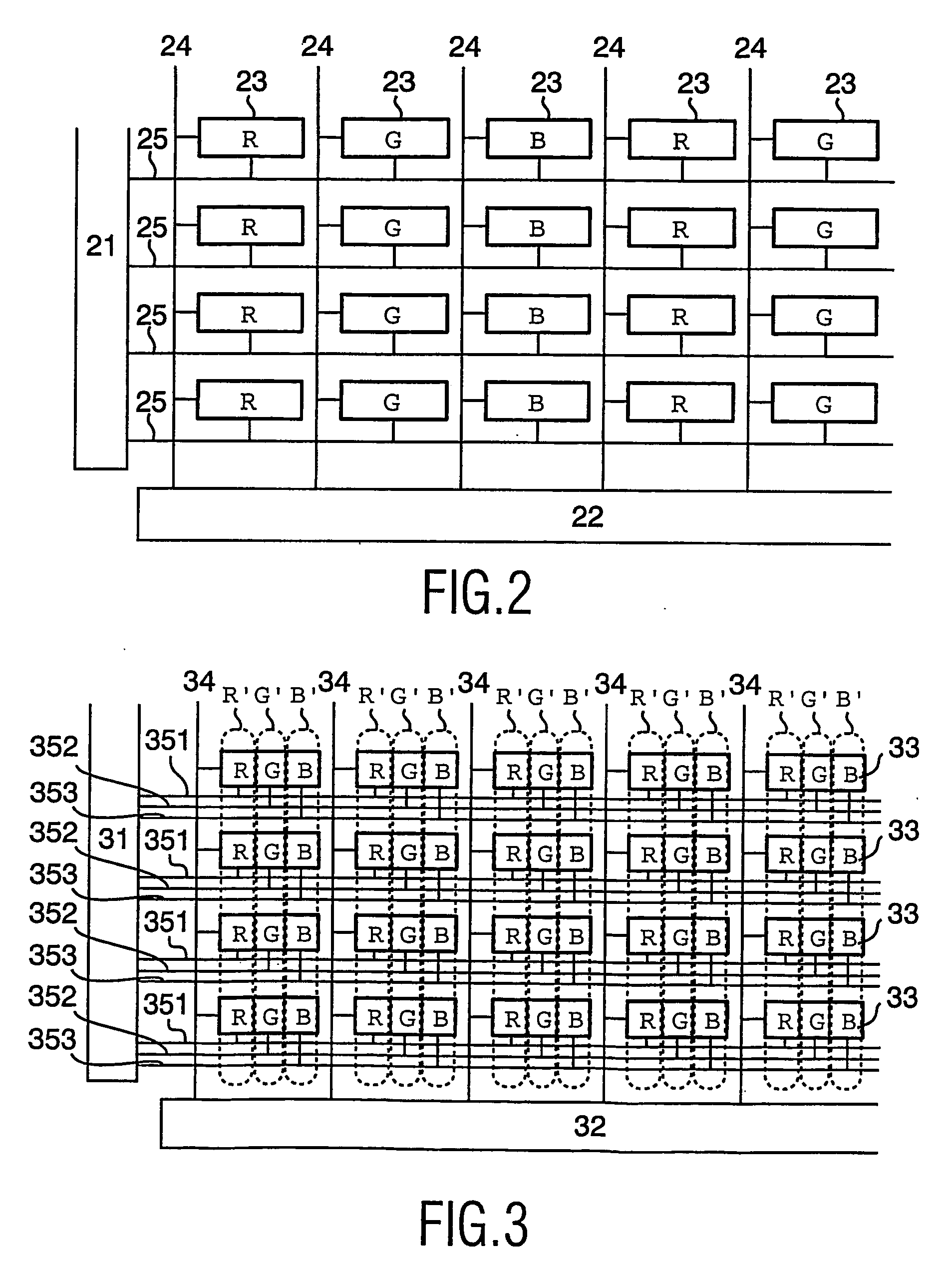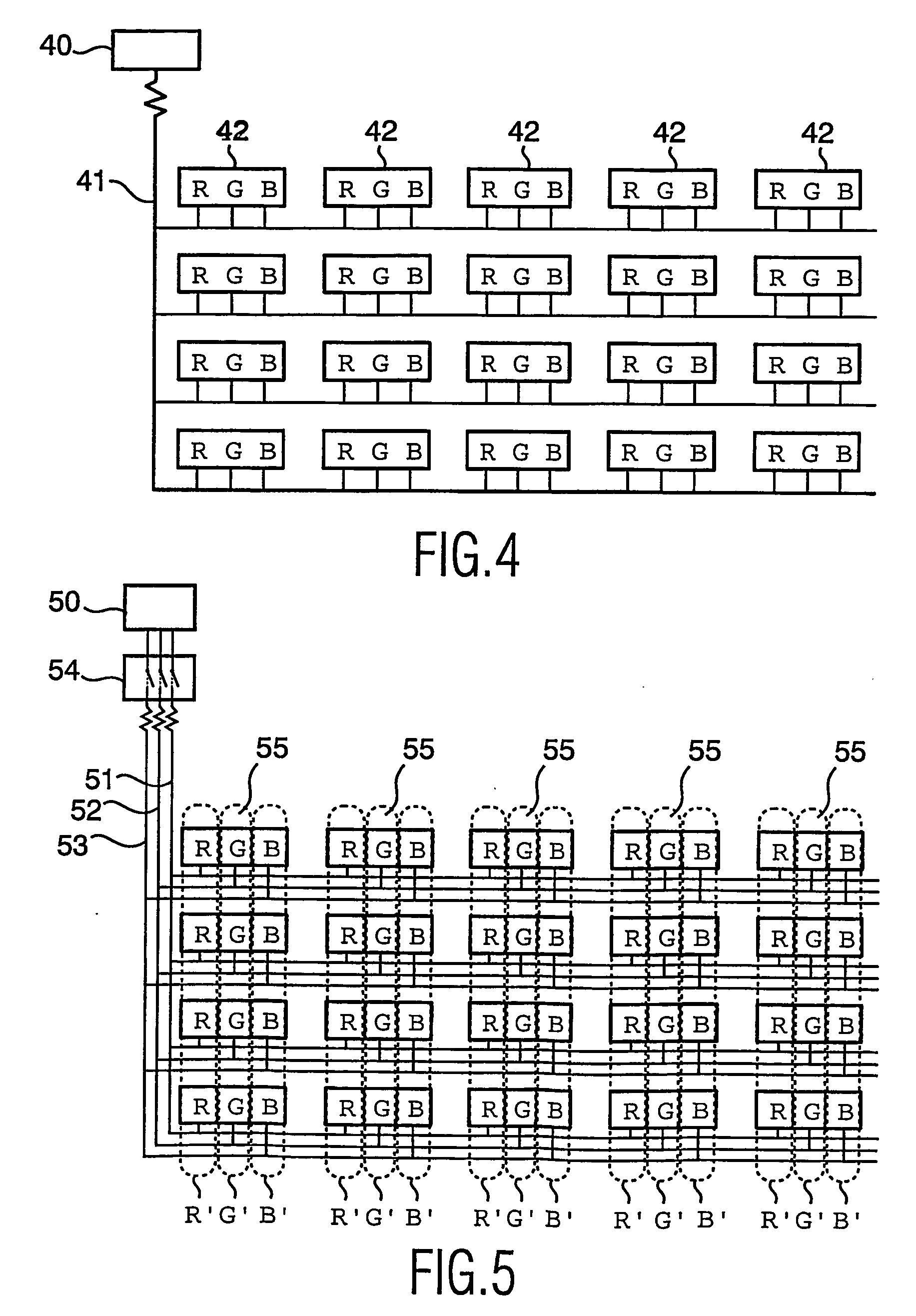Active matrix display with variable duty cycle
a technology of active matrix and duty cycle, applied in static indicating devices, instruments, non-linear optics, etc., can solve the problem of not having freedom to adjust the duty cycle, and achieve the effect of shortening the duty cycle, reducing the duty cycle, and increasing the update frequency of the corresponding pixel group
- Summary
- Abstract
- Description
- Claims
- Application Information
AI Technical Summary
Benefits of technology
Problems solved by technology
Method used
Image
Examples
Embodiment Construction
[0046]FIG. 1 schematically shows an active matrix RGB display device 10, and an enlarged part 11 of one corner of its screen. The display device 10 comprises a multiplicity of pixels 110. The pixels 110 comprised in the display device are RGB pixels, each comprising a red R, a blue B and a green G subpixel. Typically, when implementing the invention in a display device having multiple colored pixels 110, i.e. each pixel 110 has a number of subpixels R, G, B, the grouping of pixels is done such that each type of subpixel is grouped in the same pixel group R′, G′, B′. Thereby, each pixel is in a sense related to every pixel group, but each subpixel is only related to one pixel group. In a conventional display device, as schematically disclosed in FIG. 2, a row (or select) driver 21 and a column (or data) driver 22 are connected to, and address the subpixels 23 by, a row line 25 and a column line 24, respectively. Furthermore, as disclosed in FIG. 4, the pixels 42 (having subpixels R, ...
PUM
 Login to View More
Login to View More Abstract
Description
Claims
Application Information
 Login to View More
Login to View More - R&D
- Intellectual Property
- Life Sciences
- Materials
- Tech Scout
- Unparalleled Data Quality
- Higher Quality Content
- 60% Fewer Hallucinations
Browse by: Latest US Patents, China's latest patents, Technical Efficacy Thesaurus, Application Domain, Technology Topic, Popular Technical Reports.
© 2025 PatSnap. All rights reserved.Legal|Privacy policy|Modern Slavery Act Transparency Statement|Sitemap|About US| Contact US: help@patsnap.com



